Author
H.D. PARK
Author
H.D. PARK
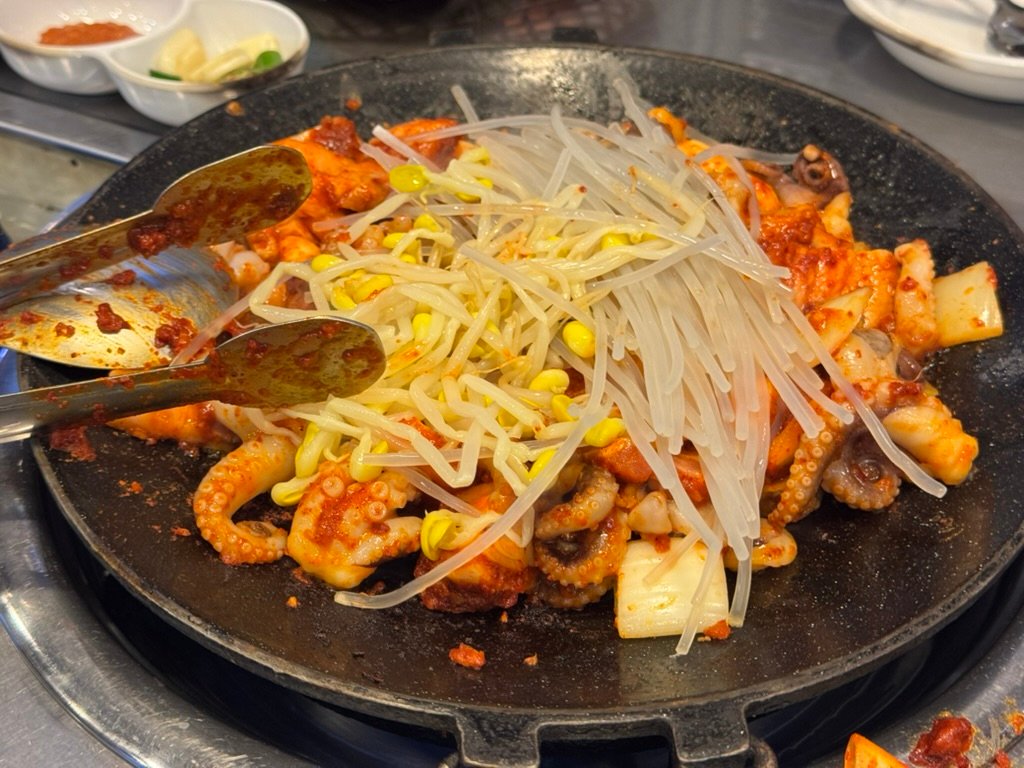

If you’ve spent any time exploring Korean food, you’ve probably come across dishes like bulgogi, kimchi, or samgyeopsal. But have you ever heard of jjukkumi?
Jjukkumi (쭈꾸미) is the Korean word for the webfoot octopus, sometimes also called short-arm octopus in English.
There are a few ways to enjoy jjukkumi, but the most popular — by far — is jjukkumi bokkeum (쭈꾸미 볶음), a dish where the tender octopus is stir-fried in a rich, spicy red pepper sauce alongside ingredients like onions, garlic, noodles, and vegetables.
While jjukkumi refers to the creature itself, when someone says “Let’s go eat jjukkumi” in Korea, they’re almost always talking about this spicy stir-fried dish made with it.
Be warned: jjukkumi is usually very spicy. If you’re not used to Korean spice, ask the waiter to lower down the spice a little when you order. But if you love spicy food, this dish will absolutely hit the spot.
One of my absolute favorite ways to enjoy jjuggumi is with samgyeopsal — thick slices of grilled pork belly. Many jjukkumi restaurants actually feature this combination on the menu, and for good reason. The spicy, chewy octopus and the fatty, juicy pork balance each other perfectly.
But that’s not the only combo you’ll find. Some restaurants also offer jjukkumi with shrimp, which adds a different texture to the mix. Or just want the best of everything — go for the jjukkumi + shrimp + samgyeopsal trio. It’s also a popular option, especially for groups, as it relieves you from the burden to have to choose.
Of course, if you’re here for the octopus, you always have the option to order jjukkumi only. Many places have also let you choose extra toppings like rice cakes, noodles, etc. So checkout the menu before you make your final decision.
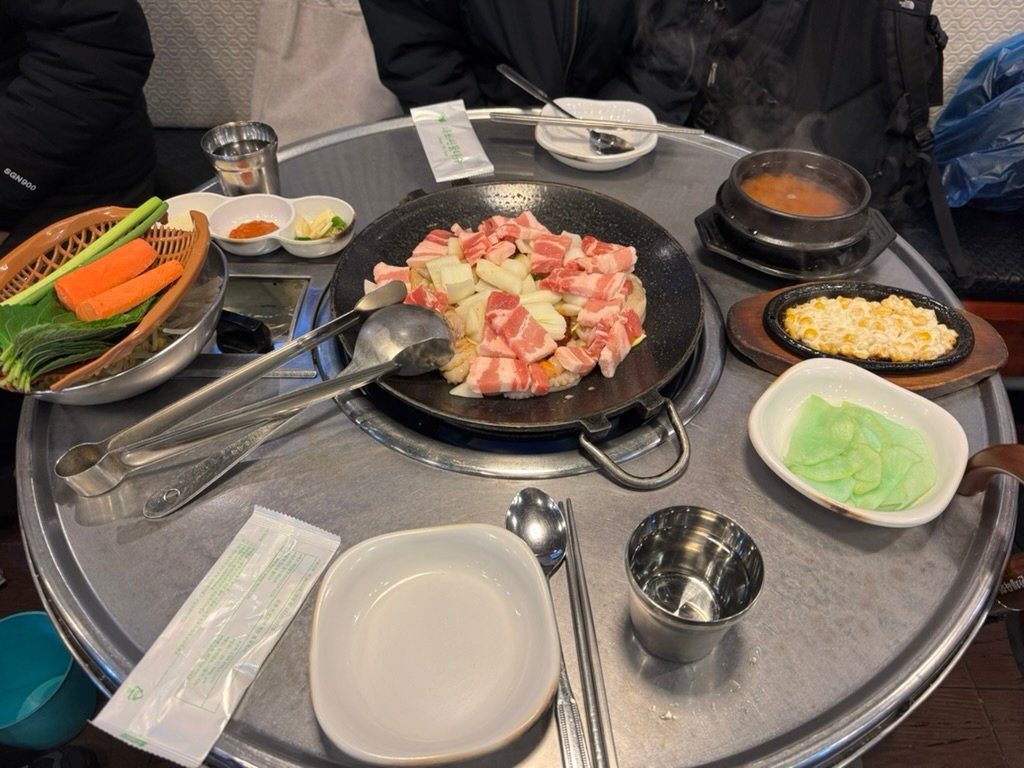
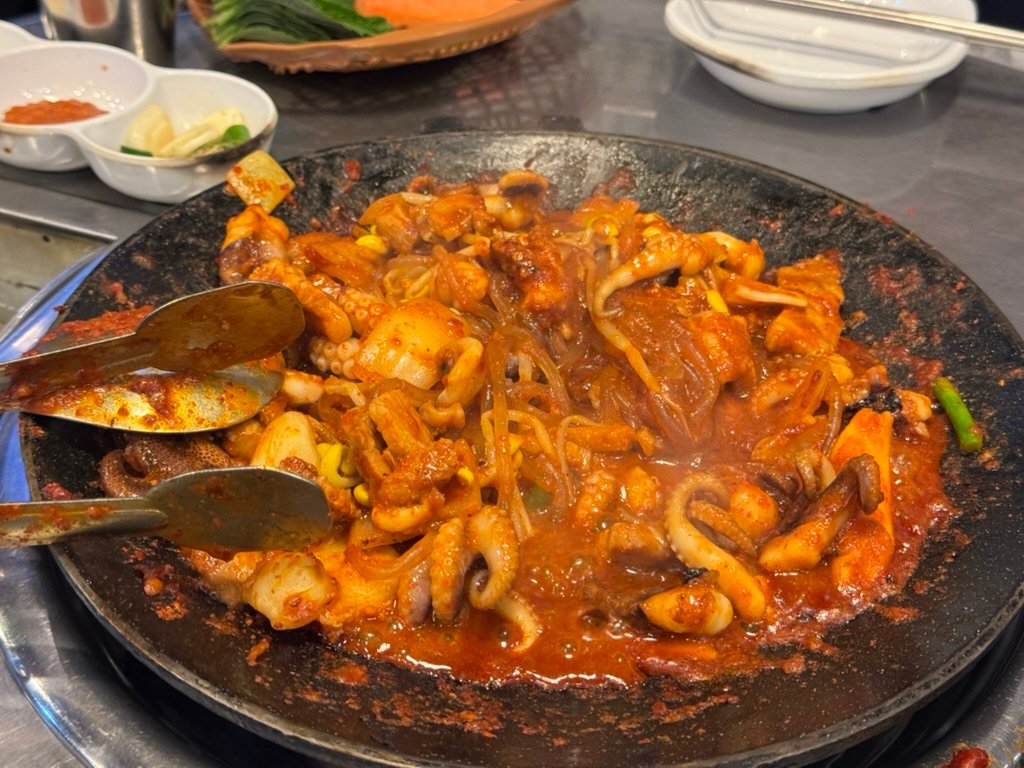
An essential part of the jjuggumi experience is wrapping it in a ssam (쌈) — a leafy wrap. While lettuce is commonly used, 깻잎 (perilla leaf) is the go-to wrap for jjukkumi. It has a strong herbal flavor and a slightly minty, sesame-like scent that stands up well to the spicy sauce. Add some jjukkumi, grilled meat, and maybe a slice of garlic or ssamjang, and you’ve got the perfect bite.
If you’re looking for something to take the edge off the spice, there’s a good chance you’ll find some mayonnaise on the table. Dip the jjukkumi in before you eat it — it not only adds a creamy richness but also helps soothe the heat.
If you’re eating jjukkumi at a restaurant, there’s a good chance they’ll have steamed egg (계란찜) as a side dish on the menu — and I say you should definitely try it. This soft, fluffy egg custard is served piping hot in a small stone bowl, gently puffed up like a soufflé. It’s lightly seasoned, sometimes with a sprinkle of sesame oil, and if it is made well it has a delicate, melt-in-your-mouth texture.
After a few fiery bites of jjukkumi, a spoonful of 계란찜 helps soothe the spice on your tounge. It’s one of those underrated pairings that just works, offering a perfect balance to the bold heat of the octopus.
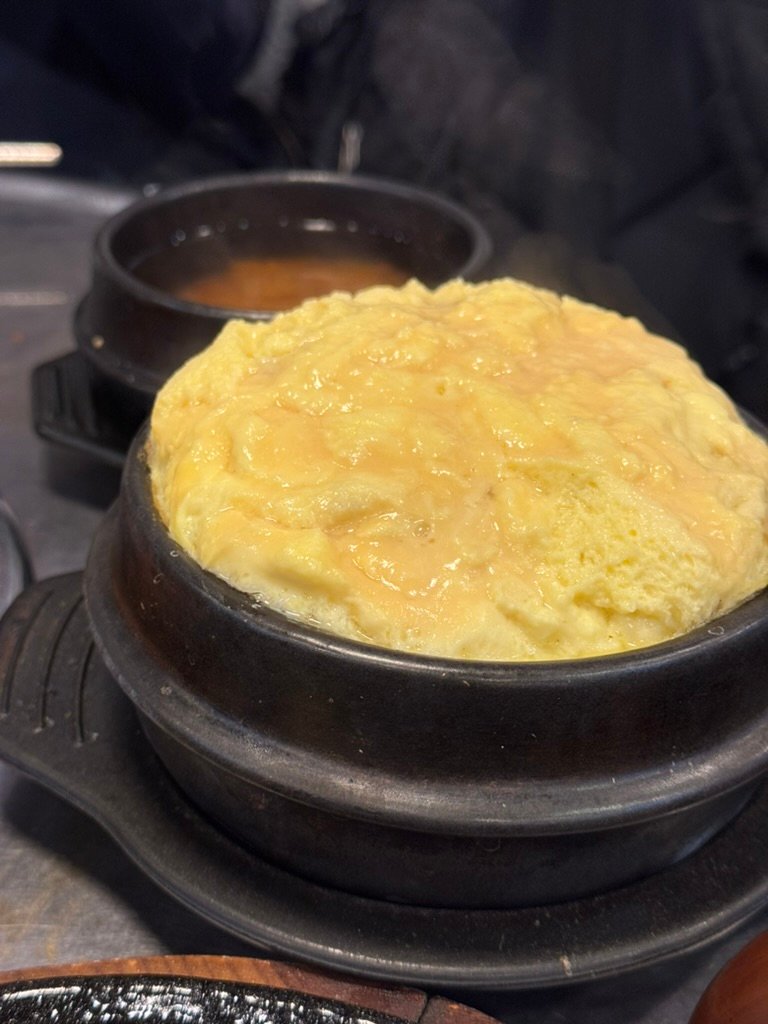
No jjukkumi meal is truly complete without 볶음밥 — Korean-style fried rice made right at your table using the leftover sauce. Once most of the jjukkumi has been eaten, call your server over and they’ll transform what’s left in the pan into a second course that’s just as good as the first.
They’ll mix in a bowl of white rice, seaweed flakes (김가루), sesame oil, and often a generous spoonful of 날치알 (flying fish roe), which pops slightly as you chew, adding texture and flavor. Everything is pressed flat against the hot pan, forming a crispy golden layer at the bottom, which I think is the best part of this kind of fried rice. It’s savory, just a little spicy, and satisfying. Honestly, some people(someone like my wife) secretly look forward to the 볶음밥 more than the jjukkumi itself.
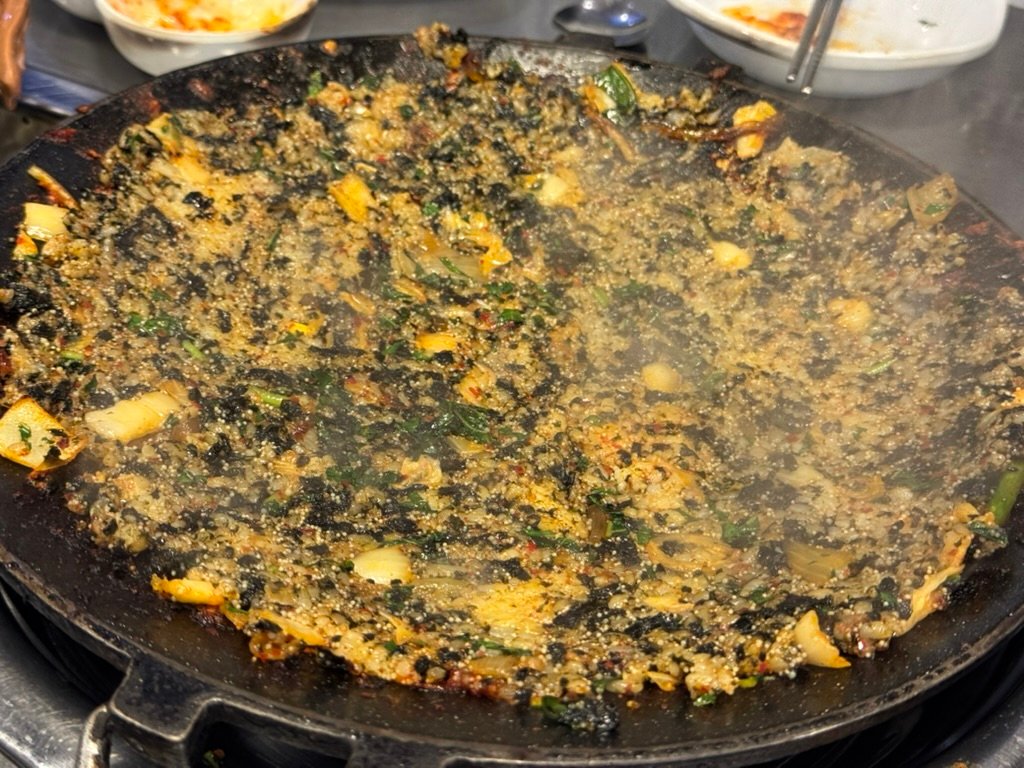
Jjukkumi can be found all over Seoul, and if you search for it on Naver Map (not sure how to use it? Check out my guide to essential Korea travel apps), you’ll probably discover a place near you. But if I were to recommend a spot, I’d say head to Cheonho — a neighborhood on subway line 8, not far from Jamsil.
Cheonho isn’t just home to one good jjukkumi restaurant — it has an entire jjukkumi 골목 (alley) dedicated to it. This backstreet is lined with restaurants all serving slightly different takes on the dish, and it’s popular among locals who often have their go-to spots. But honestly, if it’s your first time, you can’t go wrong anywhere — just follow your heart (or your nose), and you’ll likely leave satisfied and sweating.

[NAVER Map] Seongnaedong Small Octopus Alley
Seongnae-dong Gangdong-gu Seoul
Jjukkumi is one of those Korean dishes that doesn’t get as much international attention as bibimbap or bulgogi, but it absolutely deserves the spotlight. Whether you’re a spicy food lover, a seafood fan, or someone just curious about Korean cuisine beyond the basics, jjukkumi is worth a try.